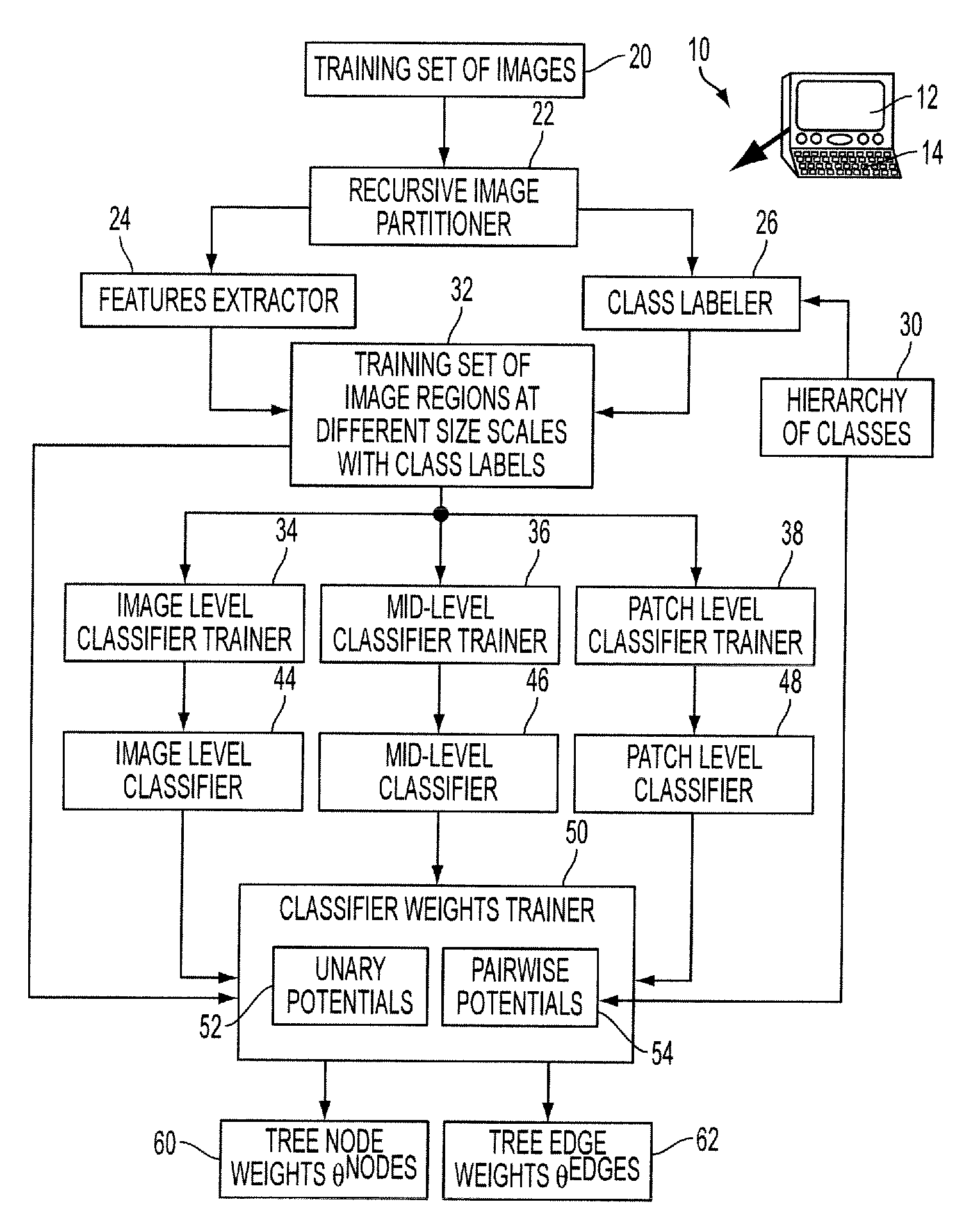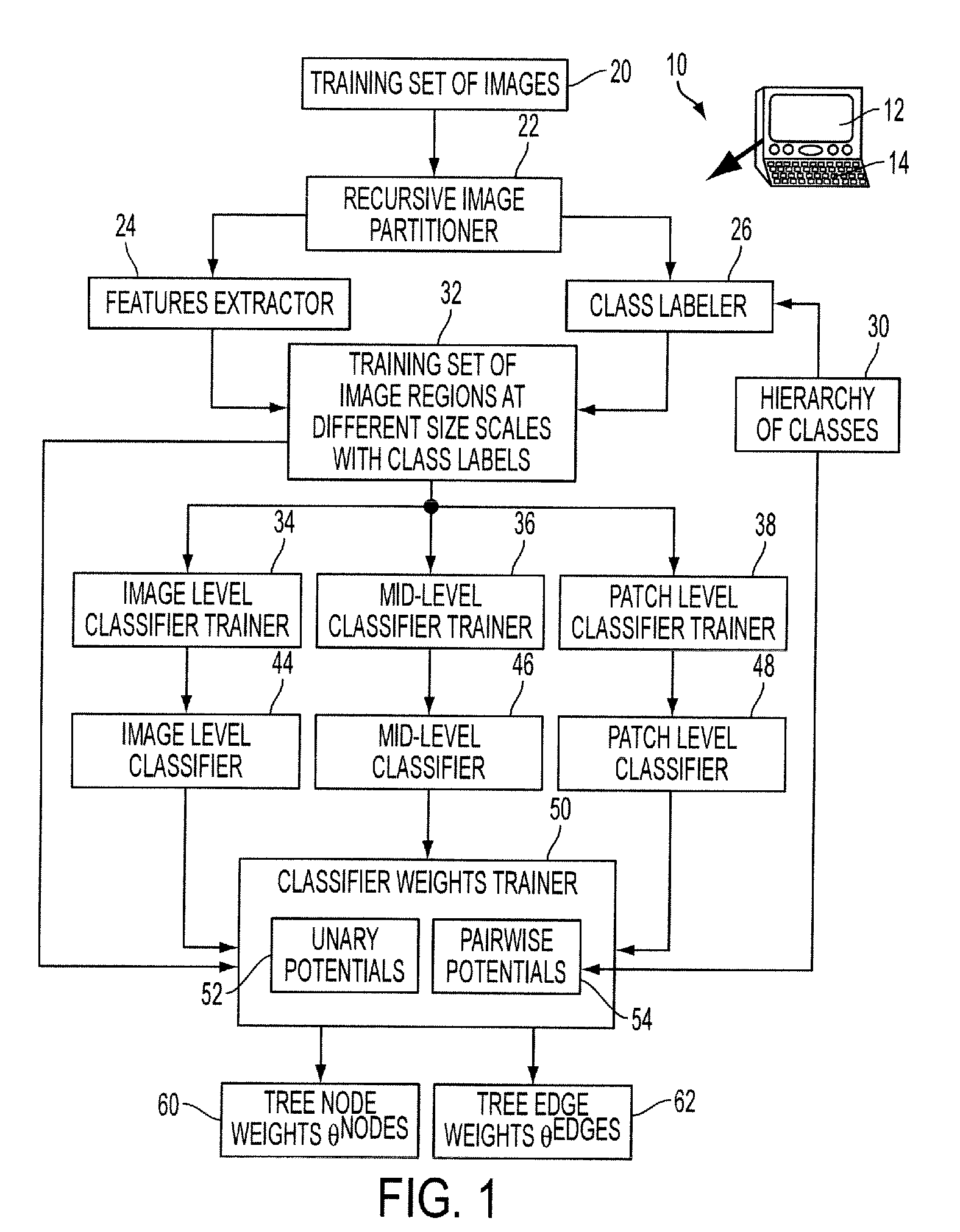Consistent hierarchical labeling of image and image regions
a hierarchical labeling and image technology, applied in the field of image processing arts, image retrieval arts, image archiving arts, can solve the problems of no basis for knowing a priori, not well-suited to tagging images containing multiple subjects, and existing image region classifiers providing no principled way
- Summary
- Abstract
- Description
- Claims
- Application Information
AI Technical Summary
Problems solved by technology
Method used
Image
Examples
Embodiment Construction
[0016]In the following, the terms “optimization”, “minimization”, and similar phraseology are to be broadly construed as one of ordinary skill in the art would understand these terms. For example, these terms are not to be construed as being limited to the absolute global optimum value, absolute global minimum, or so forth. For example, minimization of a function may employ an iterative minimization algorithm that terminates at a stopping criterion before an absolute minimum is reached. It is also contemplated for the optimum or minimum value to be a local optimum or local minimum value.
[0017]With reference to FIG. 1, a digital system includes a computer 10 or other digital processing device that includes a digital processor. The digital processor can be variously embodied, such as by a single-core processor, a dual-core processor (or more generally by a multiple-core processor, a digital processor and cooperating math coprocessor, a digital controller, or so forth. The illustrated ...
PUM
 Login to View More
Login to View More Abstract
Description
Claims
Application Information
 Login to View More
Login to View More - R&D
- Intellectual Property
- Life Sciences
- Materials
- Tech Scout
- Unparalleled Data Quality
- Higher Quality Content
- 60% Fewer Hallucinations
Browse by: Latest US Patents, China's latest patents, Technical Efficacy Thesaurus, Application Domain, Technology Topic, Popular Technical Reports.
© 2025 PatSnap. All rights reserved.Legal|Privacy policy|Modern Slavery Act Transparency Statement|Sitemap|About US| Contact US: help@patsnap.com



